Matador Network's Blog, page 190
March 28, 2024
The Most Iconic Boutique Hotels in Palm Springs

There is no shortage of epic boutique retreats in Palm Springs — many of which have stood the test of time for decades, having once served as an elite Hollywood hideaway for celebs and stars of the silver screen back in the Golden Age of LA.
Today, this starstruck city has only upped its options for those seeking an intimate inn with a smaller size for a serene escape. Browse this array of mid-century marvels and buzzy, bohemian desert hotspots — each of which seems to boast its own distinct, boutique personality — and plan the ultimate glam getaway to Palm Springs.
Traveling to Palm Springs? Check out Matador’s accommodations guides to the area: The 9 Best Palm Springs Airbnbs for a Bachelorette Party To Remember Get The Most Out of Palm Springs At These Guest Favorite Airbnbs 8 Gorgeous Palm Springs Airbnbs With Private Pools Guests Enter This Palm Desert Hotel Via a Gorgeous Gondola Ride
We hope you love these Palm Springs hotels! Just so you know, Matador may collect a small commission from the links on this page if you decide to book a stay. Listed prices are accurate as of the time of publication.
Azure Sky Photo: Azure Sky
Photo: Azure Sky Photo: Azure Sky
Photo: Azure Sky Photo: Azure Sky
Photo: Azure Sky Photo: Azure Sky
Photo: Azure SkySee more photosAddress: 1661 S Calle Palo Fierro, Palm Springs, CA 92264Starting from: $490 per night
The 21-over boutique retreat, Azure Sky, is one of Palm Springs’ most luxurious hotels. This 14-room property is known for its impressive, forward-thinking design and unobstructed views of the views of the San Jacinto Mountains. Visitors can enjoy relaxing at the large lounge pool with two shallow ends (perfect for settling in with an adult beverage), which is set amongst a scene of desert landscaping. It feels like an intimate getaway with furnishings and decor that reflect its surrounding serene, sandy landscape.
Kimpton Rowan Palm Springs Photo: The Rowan Palm Springs
Photo: The Rowan Palm Springs Photo: The Rowan Palm Springs
Photo: The Rowan Palm Springs Photo: The Rowan Palm Springs
Photo: The Rowan Palm Springs Photo: The Rowan Palm Springs
Photo: The Rowan Palm SpringsSee more photosAddress: 100 W. Tahquitz Canyon Way, Palm Springs, CA 92262Starting from: $305 per night
The Kimpton Rowan Palm Springs is the only hotel with a rooftop pool and cabanas in the city. Guests can sit at this poolside oasis which is perched seven stories up, and admire the incredible panoramic mountain and desert landscape views while enjoying a bite or a cocktail at High Bar. Or dine at the property’s restaurant, 4 Saints, one of eight Palm Springs restaurants recognized by California’s Michelin Guide. It’s set in a highly walkable area in the middle of downtown Palm Springs, putting it within easy access to dining, shopping, arts & culture, and outdoor hiking trails. Design features include contemporary mid-century modern architecture with light-filled spaces showcasing a balance of “minimalism meeting modern desert urbanity.”
Korakia Pensione Photo: Korakia
Photo: Korakia Photo: Korakia
Photo: Korakia Photo: Korakia
Photo: Korakia Photo: Korakia
Photo: KorakiaSee more photosAddress: 257 S Patencio Rd, Palm Springs, CA 92262Starting from: $489
Spread out across 1.5 acres but hosting just 28 exquisite Mediterranean and Moroccan-inspired bungalows, guesthouses and villas, Korakia Pensione feels like a peaceful retreat in the heart of Palm Springs. This property hosts an oasis of lush gardens, courtyards, pools, lounges, and water features and has been known as a safe haven desert retreat for decades. Drink tea in the Moroccan courtyard or traditional tea lounge space, gather around the fire pits, sink into a book at the library, opt for a massage at the spa, or go for a guided hike through sacred grounds in Tahquitz Canyon.
La Serena Villas Photo: La Serena Villas
Photo: La Serena Villas Photo: La Serena Villas
Photo: La Serena Villas Photo: La Serena Villas
Photo: La Serena Villas Photo: La Serena Villas
Photo: La Serena VillasSee more photosAddress: 339 S Belardo Rd, Palm Springs, CA 92262Starting from: $995 per night
This boutique hacienda-style property was built in 1933 but feels like a retro daydream, set on more than an acre of space and boasting 18 upscale bungalows. It’s a luxurious and contemporary traveler destination to enjoy access to the best Palm Springs entertainment and nightlife scene while offering a spot to escape in serene privacy. Sip a cocktail poolside in the sunshine, sign up for a therapeutic spa treatment on-site, dine at the Spanish-inspired Azucar restaurant, and enjoy the views from the scenic rooftop bar, Sugar High.
Del Marcos Hotel Photo: Del Marcos Hotel
Photo: Del Marcos Hotel Photo: Del Marcos Hotel
Photo: Del Marcos Hotel Photo: Del Marcos Hotel
Photo: Del Marcos Hotel Photo: Del Marcos Hotel
Photo: Del Marcos HotelSee more photosAddress: 225 W Baristo Rd, Palm Springs, CA 92262Starting from: $495 per night
This hotel was named after one of the “pioneers of Palm Springs,” William. F Cody, a celebrated desert architect. The property was built in 1947 and has since become an officially designated historic site. It has been awarded numerous architectural honors. There are 17 rooms, each feeling like a trip back to the height of the mid-century modern movement. Classic building materials like native stone and redwood are blended with contemporary, elegant design touches that bring the property into the 21st century. The spirit of the 1950s and 1960s is still felt on-site by way of the retro furnishing and décor. Each unique room is named after famous artists like Don Wexler, Nat Reed, Julius Shulman and Shag, and it’s almost like their legendary presence is looking out over the property.
The Three Fifty Hotel Photo: The Three Fifty Hotel
Photo: The Three Fifty Hotel Photo: The Three Fifty Hotel
Photo: The Three Fifty Hotel Photo: The Three Fifty Hotel
Photo: The Three Fifty Hotel Photo: The Three Fifty Hotel
Photo: The Three Fifty HotelSee more photosAddress: 350 S Belardo Road, Palm Springs, CA 92262Starting from: $505 per night
This intimate, 10-room mid-century hotel feels like an oasis in the desert dating back to 1950. It still boasts the original flair it has always been famed for but underwent a complete renovation in 2017 to add a hint of chic, minimalist flair to the architecture and design mix. One of this timeless retreat’s best features is its unobstructed views of the San Jacinto Mountains from the pool — the best view for sipping on a cold cocktail and sunbathing. The spacious and airy rooms feel like taking a trip to the simpler days of the “Mad Men era,” but blended with contemporary comforts that modern travelers have come to expect in the age of technology. Plus, it’s even within walking distance of the city’s hottest dining destinations, shopping spots, hiking trails, and museums.
Drift Palm Springs Photo: Drift Palm Springs
Photo: Drift Palm Springs Photo: Drift Palm Springs
Photo: Drift Palm Springs Photo: Drift Palm Springs
Photo: Drift Palm Springs Photo: Drift Palm Springs
Photo: Drift Palm SpringsSee more photosAddress: 284 S Indian Canyon Dr, Palm Springs, CA 92262Starting from: $400 per night
This boutique property is nestled into downtown Palm Springs, boasting a design-forward desert-inspired aesthetic. Classic Palm Springs mid-century modern touches blend with tributes to the brand’s Baja California roots through a sense of hippie flair — a bohemian vision and contemporary architecture. There are 84 guestrooms and suites, a resort-style pool with cabanas, an on-site Baja-inspired eatery called Maleza (home to the largest selection of tequila in the area), and sweeping sights of the mountains.
Those who are wellness-inclined will love the dreamy programming. There’s a free “Savasana” session hosted every Saturday morning on an outdoor terrace consisting of an hour-long yoga flow, and each new moon, Drift hosts an hour-long Good Vibrations Sound Bath to usher in a special sense of peace. Other unique amenities include a personalized digital concierge named Eve, as well as complimentary bikes and yoga equipment.
YARA Hotel Photo: Yara Hotel
Photo: Yara Hotel Photo: Yara Hotel
Photo: Yara Hotel Photo: Yara Hotel
Photo: Yara Hotel Photo: Yara Hotel
Photo: Yara HotelSee more photosAddress: 221 E Sonora Rd, Palm Springs, CA 92264Starting from: $603 per night
This 10-room, Spanish-style property isn’t the traditional mid-century style property typically seen in the Palm Springs area — which makes it a unique find. The word “Yara” itself translates to “water goddess” or “little butterfly,” which feels fitting for this delicate property. There are ten total warm, welcoming guest accommodations, including seven rooms and three suites — each with a “Tulum meets the Mediterranean” design aesthetic. Each accommodation faces the heated saltwater pool and courtyard which is dotted with loungers and a firepit. Grab a complimentary breakfast in La Sagrada, the lobby lounge, or grab a drink at the poolside bar. It’s an especially intimate space that feels like vacationing worldwide at a bohemian desert destination.
Casa Cody Photo: Casa Cody
Photo: Casa Cody Photo: Casa Cody
Photo: Casa Cody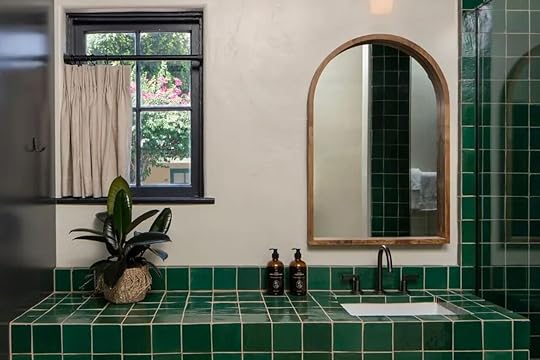 Photo: Casa Cody
Photo: Casa Cody Photo: Casa Cody
Photo: Casa CodySee more photosAddress: 175 S Cahuilla Rd, Palm Springs, CA 92262Starting from: $559 per night
Casa Cody is the oldest hotel operating in Palm Springs. It was initially founded by Harriet Cody, Buffalo Bill’s cousin, in the 1920s. The property recently underwent a historic preservation and revitalization project (its designated Class One historic site), which breathed new life into the space. Guests can enjoy contemporary amenities and updated modernist aesthetics while admiring how the hotel has paid homage to its heritage by preserving the original on-site essence. Admire the lush landscaping elements, including flourishing bougainvillea flowers, native desert plants, and fruit trees. Start the day with a fresh breakfast included in each stay and grab a bite later at the breezy on-site bistro, The Marketplace. Cool off in one of the two swimming pools, or book a massage treatment. There are 30 accommodations, many hosting kitchenettes or full kitchens and private patios or fireplaces.
Life House Palm Springs Photo: Life House Palm Springs
Photo: Life House Palm Springs Photo: Life House Palm Springs
Photo: Life House Palm Springs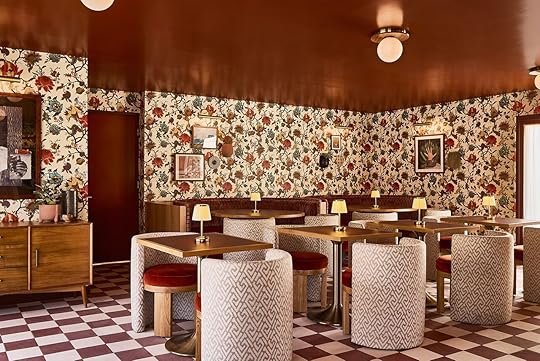 Photo: Life House Palm Springs
Photo: Life House Palm Springs Photo: Life House Palm Springs
Photo: Life House Palm SpringsSee more photosAddress: 1700 S Palm Canyon Dr, Palm Springs, CA 92264Starting from: $559 per night
Feel like a Golden Age celebrity at one of Palm Springs’ hottest new hotels — the 66-room Life House Palm Springs, which opened at the end of 2023. This property resembles a blend of traditional Hollywood and mid-century modern glam combined with a unique zen factor that gives it a relaxing atmosphere and aesthetic. The color scheme includes an array of burnt oranges and rusty red tones contrasted with shades of green and taupe — bringing the outside desert landscape in. Relax in the lounge or get some fresh air and sunshine at the pool on one of the luxurious, classic chaise lounge chairs under a bright red umbrella or in a cool cabana. Grab a bite a the outdoor poolside bar and restaurant, which preps fresh, California-inspired bites, or retreat inside for a cocktail at the lounge with its bright, floral wallpaper and classic booth-style seating. Explore the property and spend time in the desert garden clubhouse outfitted with a gazebo and cozy fire pits.
Villa Royale Photo: Villa Royale
Photo: Villa Royale Photo: Villa Royale
Photo: Villa Royale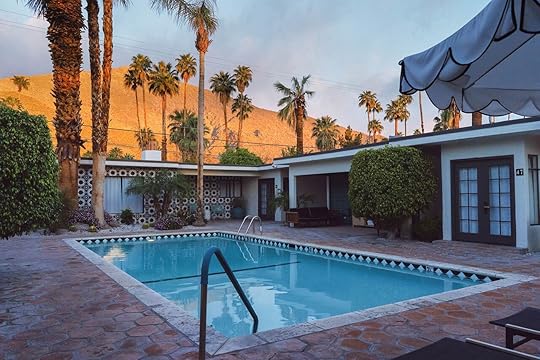 Photo: Villa Royale
Photo: Villa Royale Photo: Villa Royale
Photo: Villa RoyaleSee more photosAddress: 1620 S Indian Trail Palm Springs, CA 92264Starting from: $539 per night
This romantic, eclectic 38-room villa-style property dates back to 1947, serving as a chic Hollywood retreat for movie stars to get some peace back in the day — and has since transformed into a tranquil, modern oasis for guests 21 and over. Guests can admire detailed design work like terracotta-roofed structures surrounding courtyards dotted with Spanish fountains and decor like black-and-white tiles and bold artwork. The lush landscaping makes the space feel alive, with tall palm trees, bougainvillea flowers, and rich mahogany wood paneling. Dine at Del Rey, which serves Spanish and Mediterranean-inspired cocktails and bites.
Admire the on-site artwork, which includes 50 originals commissioned exclusively for the hotel and a spray-painted mural stating, “Welcome to Your Paradise,” welcoming guests upon arrival at the property. Sign up for a massage to fully unwind. Other on-site amenities include bicycles, morning coffee service, and a “welcome drink” at check-in.
The Colony Palms Photo: The Colony Palms Hotel and Bungalows
Photo: The Colony Palms Hotel and Bungalows Photo: The Colony Palms Hotel and Bungalows
Photo: The Colony Palms Hotel and Bungalows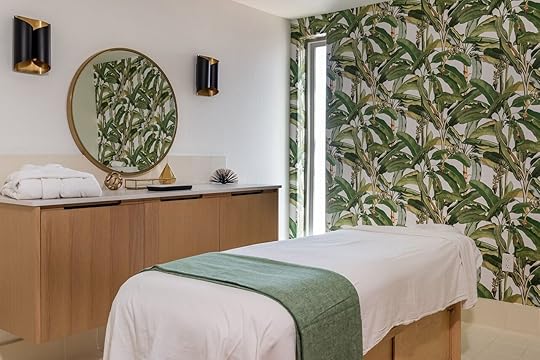 Photo: The Colony Palms Hotel and Bungalows
Photo: The Colony Palms Hotel and Bungalows Photo: The Colony Palms Hotel and Bungalows
Photo: The Colony Palms Hotel and BungalowsSee more photosAddress: 572 N Indian Canyon Dr, Palm Springs, CA 92262Starting from: $400 per night
This 57-room property was established in 1936 as a “Colonial House” by Al Wertheimer, a reputed mobster and member of the infamous “Purple Gang.” The Spanish Colonial-style hotel changed hands a few times over the decades but has continued its legacy until today, as it has since been transformed into a modern, adults-only retreat.
The hotel feels more exclusive than some other similar spots in the neighborhood, with intimate little private nook areas scattered throughout the property, along with cozy fire pits and the pièce de ré·sis·tance — the pool, which showcases a stunning view of the San Jacinto mountains, and cocktail service. Dine at The Colony Club, which serves American Continental and classic European dishes — or sign up for a restorative treatment at the full on-site spa. The guest rooms are spread out throughout the property to offer a sense of peace and privacy and are furnished to feel comfortable and spacious – each seemingly featuring unique decor to reflect their distinctive personalities.
Fleur Noire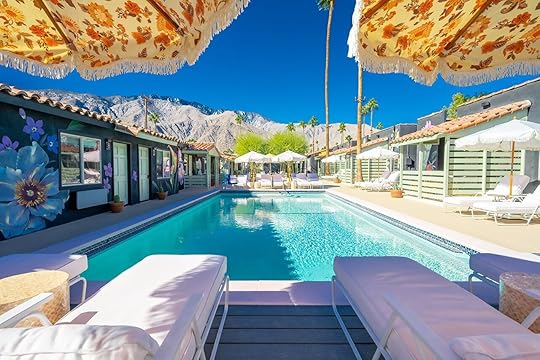 Photo: Fleur Noire Hotel
Photo: Fleur Noire Hotel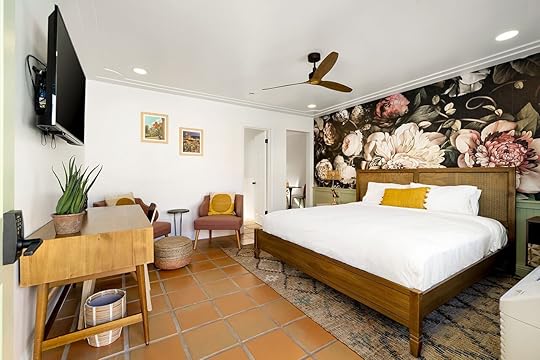 Photo: Fleur Noire Hotel
Photo: Fleur Noire Hotel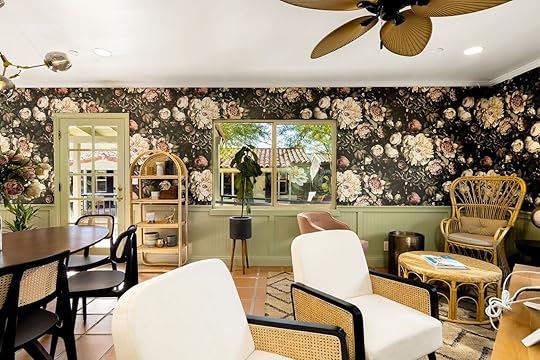 Photo: Fleur Noire Hotel
Photo: Fleur Noire Hotel Photo: Fleur Noire Hotel
Photo: Fleur Noire HotelSee more photosAddress: 1555 N Indian Canyon Dr, Palm Springs, CA 92262Starting from: $342 per night
The highlight of this newer 21-and-over oasis is likely the striking graphic floral wall murals by internationally renowned artist Louise Jones — but that’s far from its only draw (the inn is also adorned in endless flower wallpaper inside and real flora and fauna flourishing outside). There are 21 uniquely designed casitas, bungalows, and suites in Spanish-style stucco buildings outfitted with romantic tiled roofs. Adirondack chairs encircle fire pits dotting the courtyard space, along with oversized board games, a cornhole set, and a centrally located pool. Don’t miss the on-site speakeasy champagne rosé bar called La Boisson (and of course, guests can order drinks to be delivered poolside, too).
L’Horizon Resort & Spa, Hermann Bungalows Photo: L'Horizon
Photo: L'Horizon Photo: L'Horizon
Photo: L'Horizon Photo: L'Horizon
Photo: L'Horizon Photo: L'Horizon
Photo: L'HorizonSee more photosAddress: 1050 E Palm Canyon Dr, Palm Springs, CA 92264Starting from: $600 per night
The 21-and-over L’Horizon Resort & Spa is just minutes from downtown Palm Springs. It was built in 1952 by famed architect William F. Cody. This luxurious desert escape has a rich history associated with hosting the Hollywood elite, and today is a private retreat boasting unparalleled service. Dine at the intimate alfresco on-site eatery, SO•PA, which is outfitted with fire pits and fountains to create the ultimate outdoor dining experience. Set an appointment at the on-site spa, which boasts amazing mountain views from its peaceful white canvas cabanas and tranquil indoor-outdoor space. Guests will spend the night in one of the beautiful bungalows spread out over three acres of space — offering a sense of privacy and seclusion on their own private patio equipped with an outdoor shower.
More like thisTravelThe 10 Top Rated Restaurants in Palm SpringsHow to Get to the World’s Most Remote Inhabited Island
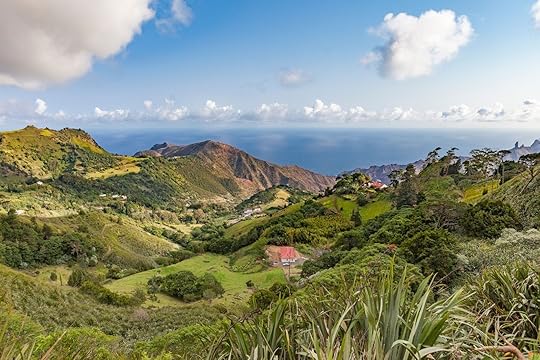
If the thought of relaxing in seclusion on vacation sounds like heaven, you might want to consider one of the world’s most remote islands, St Helena. The tiny volcanic island in the South Atlantic Ocean is about 1,900 miles east of South America and 1,200 miles west of Africa. The remote location makes it one of the most isolated inhabited places on Earth.
Discovered by the Portuguese in 1502, St Helena has been a UK overseas territory since the 17th century — so expect left-hand side driving and the British pound for currency. The island is famous for being the place of Napoleon Bonaparte’s exile after his defeat at Waterloo in 1815. Bonaparte lived on the island for six years until his death in 1821. Today visitors can tour multiple heritage sites honoring the French military commander, including his island homes.
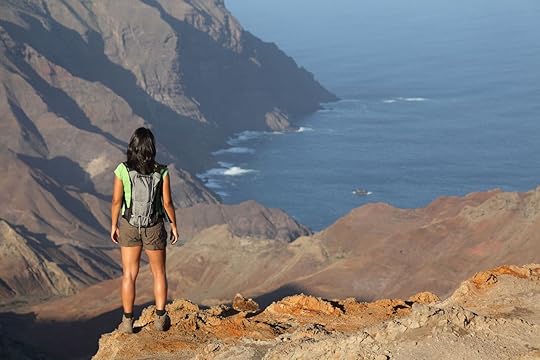
Photo: Darrin Henry/Shutterstock
St Helena is a volcanic island with a rugged terrain of rocky cliffs, peaks, and deep valleys. The island is small, measuring around 47 square miles with a population of about 4,200 people. The community is a mix of African, European, and Asian descent. And although the official language of St Helena is English, the islanders also speak a distinct local dialect.
Until 2017, the only way to reach St Helena was by boat, which took five days. Today, you can get to this remote community by plane. Here’s the best way to travel to St Helena for a vacation without the crowds.
How to get to St Helena by airThe most convenient way to reach the island is by air. St Helena Airport (HLE) opened in 2017 and welcomes visitors with weekly flights from Johannesburg, South Africa, operated by Southern Africa’s independent airline, Airlink. The flight takes approximately six hours.
Exciting news for travelers in 2024 and 2025 is the return of flights from Cape Town, South Africa. These seasonal flights will run alongside the Johannesburg service, offering a weekly Saturday flight from Cape Town and a Tuesday flight from Johannesburg.
How to get to St Helena by boatWhile there are no scheduled passenger services, experienced sailors can navigate the seas to reach St Helena’s shores. The island has facilities to welcome visiting yachts, but be sure to research mooring regulations with the Harbour Master beforehand. And although rare, cruise ships occasionally include St Helena on their itineraries, offering a glimpse of the island’s beauty for a day, so keep an eye out for African cruise routes.
How to get around on the island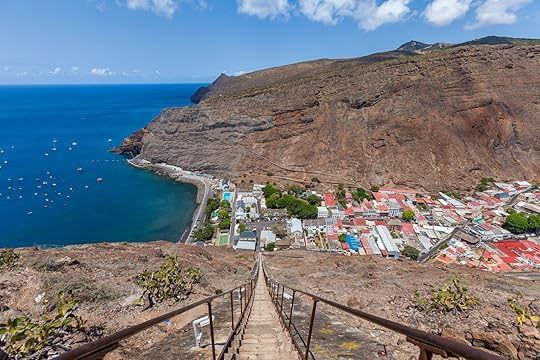
Photo: Umomos/Shutterstock
Car hire is the most convenient way to get around the island, especially if you want to explore at your own pace. However, car rentals must be booked in advance as there are only a limited number of vehicles available. Drivers must be 18 years or older and have a valid overseas driver’s license. Be aware that roads on St Helena are single-track, narrow, winding, and can be steep. The government site advises drivers to use the horn when approaching bends in daylight hours. As previously mentioned, traffic drives on the left-hand side of the road, the same as in the UK.
Taxis are available in Jamestown, the capital of St Helena. While there are no ride-sharing companies like Uber or Lyft on the island, you can grab a taxi on the street or arrange for pick-up in advance. St Helena has a limited public bus service. Buses are not very frequent, and timetables are designed to meet the needs of locals, not tourists.
More information on car hire and taxi services can be found here on the island’s tourism website.
The best places to stay on St HelenaYou must book your accommodation in advance. Options are somewhat limited. Although there are some hotels, guest houses, and bed & breakfasts, you might want to consider booking a self-catering Airbnb to have a more local experience. There’s only a handful of Airbnb listings for the island. Here are a couple of options:
We hope you love the Airbnbs we recommend! Just so you know, Matador may collect a small commission from the links on this page if you decide to book a stay. Listed prices are accurate as of the time of publication.
Cottage in beautiful Sandy Bay Photo: Airbnb
Photo: Airbnb Photo: Airbnb
Photo: Airbnb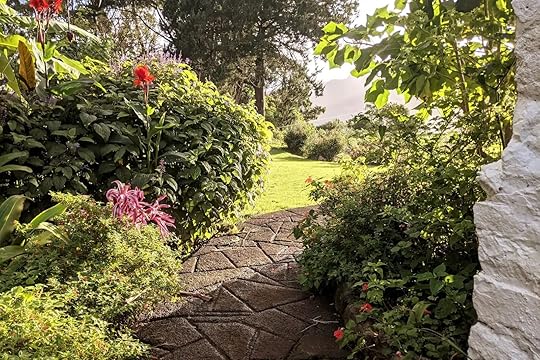 Photo: AirbnbSee more photos
Photo: AirbnbSee more photosThis beautiful garden cottage sits high on the central hills of St Helena. It offers fantastic views of the island’s central peaks from the front door and has access to Wrangham’s tropical gardens and coffee estate. Inside, the Airbnb has a charming decor, with a modern kitchen and a bedroom with patio doors leading out into the garden. The island recently received high-speed internet, and this Airbnb has a connection throughout — perfect for those who want a unique digital nomad experience.
Two guests, one bedroom
Price: $80 per night
 Photo: Airbnb
Photo: Airbnb Photo: Airbnb
Photo: Airbnb Photo: AirbnbSee more photos
Photo: AirbnbSee more photosPerfect for a small family or group, this two-bedroom cottage is in the middle of historic Jamestown. It’s a short walk from the main town’s shops and restaurants. Outside, there’s a covered verandah, so you can eat outside or just relax on warm days. The two spacious bedrooms are on the second floor, where you’ll also find the toilet. On the ground level, there’s a second bathroom with a bath and shower and an open-planned kitchen and dining area.
Four guests, two bedroom
Price: $80 per night 
March 27, 2024
Why Seat Cushions Are Thinner in the Emergency Exit Row

Air travelers who want more legroom but can’t afford to fly business class know that the bulkhead and emergency exit row seats are the best places to sit in coach. Of course, booking those seats costs more and requires travelers to act fast — they are very sought-after spots. But are emergency exit row seats all they are cracked up to be?
Let’s see. For one, they don’t provide passengers with a seat-back pocket where they can stuff their knick-knacks. Additionally, they don’t allow passengers to store their personal items under the seat in front of them, forcing them to use the often-full overhead bin. But also, they are, surprisingly, less comfortable. Indeed, depending on the aircraft, emergency exit row seats may not recline, they may be narrower than other seats, the armrests may be fixed, and, like a bad joke for all those paying more in a desperate attempt to gain comfort, the emergency exit row seat cushions are always thinner and shorter than all the other seat cushions in the same aircraft.
While it sounds like the airline industry is trying to make you miserable no matter what, it’s not a global sadistic ploy targeting tall passengers with extra cash. Emergency exit row seats are different for safety reasons; their cushions are thinner and shorter so that they don’t impede the flow of people trying to evacuate an aircraft in the event of an emergency. It’s same reason why the stoppers on tray tables in the emergency exit row are different.
The difference in padding thickness isn’t so shocking that you’d notice, but it’s a flying safety regulation that can make a big difference in case of an evacuation. Actually, if the seat cushions in the emergency exit row are not the proper thickness, the aircraft could be grounded, as demonstrated in the following TikTok videos.
@slimventures PART 1 – Random aviation authority checks in Milan almost grounded this British airways to LHR. #aviation #airbus #britishairways #milan ♬ original sound – Slim
In February 2024, a passenger on board a British Airways flight from Milan to London filmed as, prior do departure, Italian aviation officials checked the emergency exit row seat cushions to find that they were too thick. The flight was held up and all the passengers were asked by the crew to look at their own cushions to see if they had one of the emergency exit row seat cushions instead of standard ones. The flight was delayed until all the proper cushions were found.
@slimventures PART 2 – Random aviation authority checks in Milan almost grounded this British airways to LHR. #aviation #airbus #britishairways #milan ♬ original sound – Slim
While it seems like the situation in the video is a unique one, an air traveler using the forum Flyertalk describes a similar incident happening before a flight between Detroit and Orlando in November 2012. 
Patagonia’s Best Backpacks Are 50 Percent Off Right Now
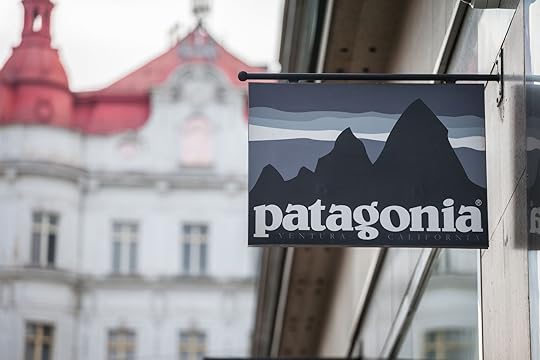
Patagonia earned is reputation as one of the most trusted outdoor brands through rugged testing of its packs, clothes, and climbing gear – and this shows both in the gear’s durability and in its premium pricepoint. That said, the brand – voted the most reputable large company in the US according to a recent Axios-Harris poll – offers a heck of a sale now and then. Such is the case this spring on past-season products, where you can snag 50 percent off clothing, packs, and more. The below backpacks are trusted by Matador editors and each is at least half off right now.
We hope you love these Patagonia backpacks! Just so you know, Matador may collect a small commission from the links on this page if you decide to book a stay. Listed prices are accurate as of the time of publication.
Patagonia Ascensionist Pack 35L and 55L
Photo: Patagonia
This is the biggest deal of the sale, in Matador’s opinion. The Patagonia Ascensionist Pack is a series of climbing backpacks designed for various lengths of alpine adventures. They are known for being lightweight and comfortable, while still offering the durability and functionality needed for technical climbs. Even if you aren’t an avid climber, these are excellent for ski tours and hut trips, as well as general mountaineering, summit hikes, and backpacking.
The Ascensionist Pack comes in three different sizes: 30L, 35L, and 55L, though the 30L pack isn’t part of this sale. The 35L is ideal for fast-and-light ascents and short trips, while the 55L is better suited for longer climbs where you need to carry more gear. All of the packs are made from a durable nylon ripstop fabric with a water-resistant PU coating, and they have features like padded shoulder straps, a removable hipbelt, and ice axe loops.
35L on sale for $93.99, normally $189
55L on sale for $118.99, normally $239

Photo: Patagonia
With a 30-liter capacity, the Patagonia Fieldsmith Roll-Top is unique in that despite being an outdoors-worthy pack, it has ample space for your daily essentials, groceries, or gym clothes. The roll-top closure allows you to adjust the pack’s size based on what you’re carrying, and it creates a water-resistant seal to shield your belongings from the elements
.
This pack is built with durability and comfort in mind. Made from 100% recycled polyester with a PFC-free DWR finish, it’s both eco-friendly and water-repellent. The padded laptop sleeve safeguards your device, while the external pockets keep smaller items organized and easy to access. Users particularly commend its well-made construction, lightweight, and attractive design.
On sale for $63.99, normally $129
Patagonia Dirt Roamer Pack 20L
Photo: Patagonia
Built for demanding bike rides, the Patagonia Dirt Roamer Pack 20L offers a comfortable and stable transport solution for essential gear. This backpack prioritizes breathability and organization for long hauls or unpredictable weather. The Regulator Airmesh back panel allows for airflow to keep you cool, while the low-profile design minimizes shifting and ensures stability as you navigate uneven terrain.
With 20 liters of capacity, the Dirt Roamer Pack holds enough layers and supplies for extended adventures. The pack features multiple pockets to keep your gear organized and readily available. A dedicated hydration compartment keeps you replenished, while easy-access hip belt pockets store snacks or tools within reach. Patagonia constructed the Dirt Roamer Pack with recycled nylon for eco-conscious durability, ensuring it can withstand the wear and tear of frequent rides.
On sale for $78.99, normally $159
Patagonia Guidewater Pack 29L
Photo: Patagonia
Adventure-proof your gear with the Patagonia Guidewater Pack 29L. This fully submersible backpack is built to handle the toughest water conditions, thanks to its durable, recycled materials and IPX7 waterproof rating. Whether you’re kayaking, paddleboarding, or braving heavy rain, the Guidewater Pack will keep your belongings dry.
Despite its rugged construction, the Guidewater Pack prioritizes comfort and functionality. The minimalist design sheds unnecessary weight, while the harness system and padded shoulder straps ensure a comfortable carry throughout your trek. Internal organization options include a removable pouch and a dedicated net scabbard, making it easy to keep essentials close at hand.
On sale for $148,99, normally $299
Patagonia Kids Refugito Daypack 12L
Photo: Patagonia
Designed for little adventurers, the Patagonia Kids’ Refugito Daypack 12L is a comfortable and eco-conscious backpack that’s perfect for day trips and outdoor exploration. Made with recycled materials and featuring a Fair Trade Certified construction, it’s a backpack you can feel good about putting on your child’s back. This 12-liter pack boasts a kid-specific fit with adjustable, trail-ready shoulder straps and a breathable back panel to ensure a comfortable carry for young explorers.
The Refugito Daypack 12L features a simple yet functional design. A spacious main compartment offers ample room for snacks, a water bottle, and extra layers, while a smaller top pocket with a secure closure keeps valuables like sunglasses or a compass safe. Mesh side pockets provide additional storage for essentials, and fun design elements like gear loops and reflective trim add a touch of personality.
On sale for $33.99, normally $69
Patagonia Refugio Daypack 26L
Photo: Patagonia
With a 26-liter capacity, the Refugio offers enough space for your daily essentials, and doubles as an excellent gym bag. The internal organization compartmentalizes your gear, while the external pockets keep frequently used items like water bottles or snacks within easy reach. This backpack is built with comfort in mind; the padded shoulder straps and adjustable sternum strap distribute weight evenly, making it comfortable to carry for extended periods.
Crafted with recycled materials and a PFC-free DWR finish, the Refugio Daypack 26L is an eco-conscious choice. Patagonia’s commitment to sustainability extends to their manufacturing practices; this pack is Fair Trade Certified sewn, meaning workers were paid adequately for their labor. Users consistently praise the Refugio Daypack 26L for its durability, comfort, and functionality, making it a great choice for everyday use or outdoor adventures. 
On sale for $53.99, normally $109
More like thisOutdoorWe Tested Patagonia Rain Jackets in the Real World and These Are the 6 BestThis Turkish Hotel Has Five Exclusive Beaches for Every Type of Traveler
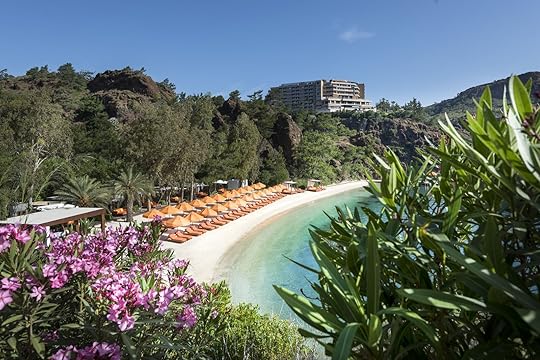
As I touched down at Dalaman Airport in Türkiye, a warm breeze and a hint of salty humidity welcomed me, signaling that the Aegean Sea was just around the corner.
I was on my way to the enchanting D Maris Bay, a luxurious beach resort in the southwestern part of the country. The 1.5-hour drive to the hotel revealed stunning views of olive groves, volcanic mountains, and lush forests while the sea glistened in the distance, giving me a sneak peek of the paradise waiting. D Maris Bay is perched on a hillside of the Datça Peninsula, where the Aegean and Mediterranean Sea meet.
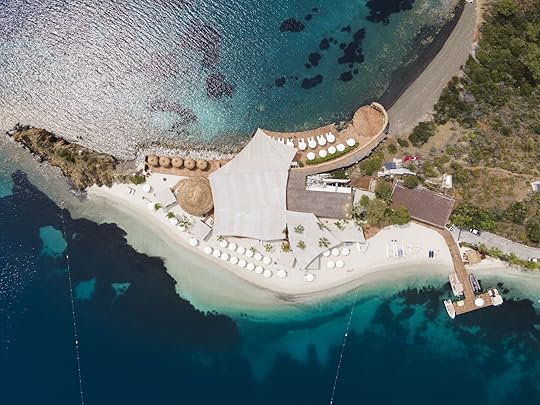
La Guerite Beach at D Maris Bay. Photo: D Maris Bay
My arrival timed perfectly with sunset, and I elected to take my welcome drink on the lobby terrace while the staff handled my check-in. Looking down, I saw the hotel’s pools, beaches, and restaurants tucked steps from the sea, with the sun setting behind the landscape, bursting with oranges and reds — perfectly matching the crisp Aperol spritz I was sipping.
Expect big rooms with lots of natural light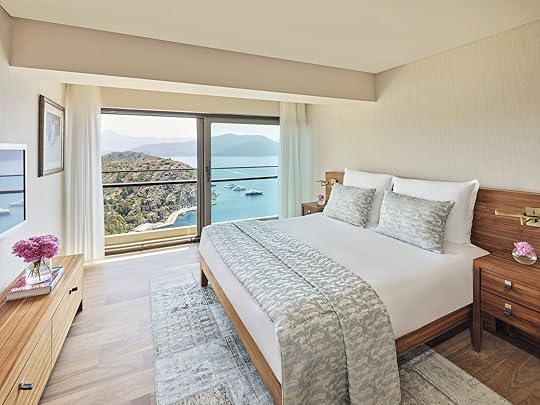
A standard room at D Maris Bay. Photo: D Maris Bay
There are 196 rooms and suites at D Maris Bay, plus a presidential suite and “exclusive villa.” I stayed in a “deluxe sea view room,” which is a few steps up from the most basic room type, but still on the less-expensive end. Nightly room rates range from $295 in the low season to more than $1,680 in the high season. Rates on the Presidential Suite go up to well over $10,000 a night. The hotel is only open from April to October, with peak season spanning from June to September.
My room was spacious and flooded with natural light from the floor-to-ceiling windows. It was tastefully decorated, but the best part of the room was the balcony. Not only did it have amazing views, but it also had an outdoor bathtub with glass walls facing the bay (and offering plenty of privacy).
Regardless of what room type you choose, all rooms come with luxurious amenities like a mini-bar, an in-room pillow menu, and high-end toiletries – no combined-shampoo-and-conditioner here.
The resort has private boats to carry you between remote beaches
“Silence Beach” for adults at D Maris Bay. Photo: D Maris Bay
Most activities at D Maris Bay revolve around the beach, but there’s no need to tax yourself before getting there: there’s a funicular to carry guests from the lobby and rooms to the beach area, and the ride from the treetops to the crystal-clear bay below is almost as pretty as the beaches themselves.
Once you’re at sea level, you have plenty of options for catching some sun. There are five beaches at D Maris Bay (two secluded and tucked away from the rest of the property), plus three pools. And if walking between beaches sounds like too much work, don’t worry: the resort has boats to ferry guests between each of the private bays and beaches.
The Bay Beach is best for families, with a gentle slope and turtle-filled waters ideal for easy snorkeling. La Guérite Beach is more of a party vibe, akin to what you’d find in Ibiza. Expect afternoon DJs and late-night beach parties. Manos Beach is casual and, as the name suggests, similar to the relaxed, natural beaches you’d find on some Greek islands. Silence Beach doesn’t demand quiet, but it is for adults only, with lots of pairs of lounges and umbrellas that offer a little extra space. Maris Beach is where you’ll find the beachside spa, as well as floating daybed.
If the beaches aren’t relaxing enough for you, guests can visit the property’s Mytha Spa, with a Turkish bath, sauna, and swimming pool. There’s a rather extensive spa menu, but unfortunately, the current version isn’t posted online – but just know that most services you’d expect (and many you wouldn’t) are available on site.
Cruising on the Aegean Sea
View this post on Instagram
A post shared by D Maris Bay (@dmarisbay)
Embarking on the beautiful waters of Aegean Sea on the Turkish coastline was the highlight of my stay at D Maris Bay, and the hotel makes it easy to explore surrounding islands and towns by offering various trips on its private yacht, the Alia Open Sea. Day trips aren’t included in the cost of a stay but are a great way to get a sense of the destination.
As we cruised on the waves, the captain shared insights and stories about the various coastal towns, as well as the history of the region. Onboard, we snacked on fresh fruit and Turkish wines, and even got a chance to jump into the water. Despite being October, the water remained surprisingly warm, and after a few hours of activity, we headed back to the harbor to get ready for dinner.
D Maris Bay has its own yacht club, and private bespoke charters are available, for guests with extra-deep pockets.
Drinking and dining at D Maris Bay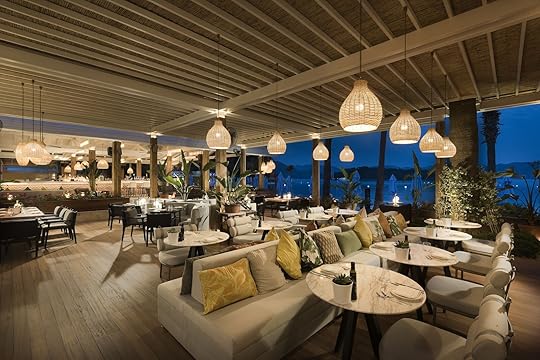
D Maris Kitchen, for quick and casual al fresco lunches. Photo: D Maris Bay
The luxurious Turkish resort has a whopping seven restaurants, plus 10 bars and lounges (some of which are associated with the restaurants).
The most casual options are DD Scoop & DD Ice Cream (a coffee bar and ice cream shop), D Maris Kitchen (for casual lunchtime fare like burgers and salads), and The Terrace, which serves breakfast each morning (included with the room rate). The more formal restaurants are Nusr-Et (a steakhouse), Manos (Greek), La Guérite (the seafood-heavy beach club restaurant), and Zuma, the hotel’s waterfront Japanese restaurant.
Manos offered an exciting blend of delicious food, live music, and dancing – and plate breaking. Meals are served family style, set to the backdrop of a lively (and live) Greek band. My favorites were the zucchini paired with tzatziki, and, undoubtedly, the colossal bowl of seafood pasta, filled with clams, mussels, and shrimp. But the most unique part of the meal was getting to participate in a Greek tradition: plate breaking. It’s thought to bring good luck, and symbolizes breaking old habits, keeping away bad spirits, and getting a fresh start.
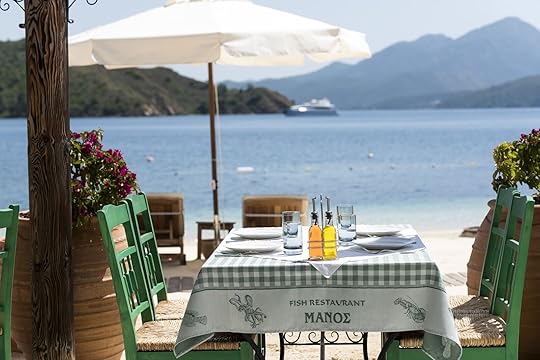
Manos Greek restaurant at D Maris Bay, Türkiye. Photo: D Maris Bay
I also ate at Zuma, set just below the lobby overlooking the Datça Peninsula. Right away, I noticed two things: the gorgeous backdrop of the vibrant orange-and-pink sunset hues, and the irresistible scent of truffles drifting from the sushi counter. While listening to the resident DJ, I ordered a chili-passion fruit margarita, which was expertly balanced. All the seafood was delightful, but the standout was probably the gindara no dailyo yaki – miso black cod wrapped in hoba (magnolia) leaves. It was tender and buttery with a perfect umami finish.
La Guérite, set on one of the resort’s beaches and reachable by the hotel ferry, was a great spot for lunch. It has a beachy-cabana vibe, akin to a St. Barth beach club, with a secluded atmosphere. The menu is Mediterranean, with lots of fresh seafood and light bites such as tomato salad, sea bass ceviche with citrus broth, or garlic mussels.
Even if you’re not a dessert-at-lunch type of person, consider getting the La Guérite profiterole regardless. The heavenly treat was a perfect take on the classic profiterole, with a fluffy pastry, velvety cream, and a generous pour of chocolate sauce, added at the table.
Getting to D Maris Bay
To reach D Maris Bay, you’ll first need to fly to Istanbul. It’s a major airport, so you’ll find direct flights from cities in the US, but they’re long. From NYC, it’s a 10-hour flight, and flying from LA will take you just over 13 hours. From Istanbul, it’s a one-hour flight to the Dalaman Airport, then a 1.5 hour drive to the resort. You can arrange a shuttle from the hotel in advance.
That makes the travel to D Maris Bay a bit lengthy, so most guests will want to stay for at least three or four days, especially to leave enough time to experience the various beaches. However, you can speed up the travel process a bit by reserving the hotel’s helicopter. If you take to the skies, it’s just a quick 25-minute journey from Dalaman Airport directly to the hotel’s helicopter landing pad. 
Why Anyone Who Loves Rare Bourbon Should Visit Japan

Last November, I took advantage of a recently revived direct flight to Tokyo on United Airlines from my hometown of Denver. It was a nine-day family trip with my wife and one-year-old daughter, and eating was top of mind. Partly because we took the trip over Thanksgiving, partly because, well, nearly all of our travel is centered around eating. For one of the nights, my wife graciously took over childcare duties so I could go out and get a taste of Japan’s famous cocktail culture as well as seek out some rare Japanese whisky (like most of the world, Japan drops the “e” in whiskey).
I found plenty of cocktails, but Japanese whisky that I couldn’t also find at home proved harder to come by. Turns out what I really should have been on the look out for was rare vintage bourbon.
A new book by journalist Aaron Goldfarb, Dusty Booze: In Search of Vintage Spirits, covers the wild world of “dusty hunting.” Collectors, spirits lovers, and people looking to make a quick buck have been scouring liquor stores for forgotten vintage liquor for the better part of two decades. Some do so because it’s an ephemeral time capsule, or because they believe the old stuff was simply made better. Others because these bottles were undervalued by people not in the know and could be flipped for thousands of dollars or sold by the ounce at bars for hundreds of dollars a sip.
View this post on InstagramA post shared by Aaron Goldfarb (@aarongoldfarb)
I’m not a dusty bottle hunter myself. That said, as someone who has written about alcohol for nearly 10 years, I love the idea of being able to try something rare that will never exist again. Because of the high price, however, those experiences are few and far between. America’s liquor stores have largely been picked over already and the barrier to entry is simply too high.
Yet it’s a different story in Japan thanks to a quirky piece of drinking history.
“Japan is still a bit of a dusty bourbon haven,” Goldfarb tells me over Instagram. “Dudes definitely still travel there explicitly to look for bottles.”
By the 1970s, bourbon was out for American drinkers and disco drinks that hid neutral tasting spirits were in. That led to what Goldfarb calls the “glut era” — a time when plenty of bourbon was still being made, but not a lot was being sold. So some bourbon distilleries turned to foreign markets. The place that really took off? Japan.
Older Japanese drinkers stuck to their Scotch, which has a longer history in Japan, and native Japanese whisky, which is modeled after Scottish distilling practices. The opportunity was with younger generations who followed American culture.
William Yuracko, who led the export division of the now-shuttered liquor conglomerate Schenley International, saw this opening after a trip to Japan in 1972, Goldfarb writes. He struck a distribution partnership with Japanese spirits giant Suntory, and bourbon-focused spirits company Brown-Forman (today one of the largest liquor conglomerates in the world) did the same.
“Suntory wanted a ‘critical mass’ of bourbon, ‘a product for every taste and price level,’” Yuracko told Goldfarb, “and each brand was given its own identity and market niche.”
The two companies were competitors in the United States. Suntory made them both big in Japan. Schenley’s brands Ancient Age, J.W. Dant, and I.W. Harper took off abroad, as did Brown-Forman’s Early Times, Old Forester, and Jack Daniel’s. Suntory opened bourbon bars to meet Japanese consumers where they like to drink. A portion of the bars had a distinct “America” theme — country music, burgers, fried chicken — but they all focused entirely on bourbon.
The gambit worked. I.W. Harper in particular became a favorite, going from 2,000 cases sold internationally per year in 1969 to being the biggest bourbon in Japan at 500,000 cases per year by 1991. The distillery even stopped selling in America for a time to feed Japanese demand, meaning these now-vintage bottles are especially hard to find unless you’re abroad. Across the board, 2 million cases of bourbon went to Japan every year by 1990.
The Japanese market’s influence eventually started to change bourbon itself. Drinkers there were used to spirits like Scotch that aged in barrel for more than a decade. Scotland has consistently cooler, more mild temperatures than hot-summer Kentucky, where nearly all bourbon is made. Scotland’s weather means spirits can age in barrel for longer without being overtaken by heavy oak flavors. Bourbon, by contrast, was typically aged about four years to keep the oak from taking over.
Japanese drinkers wanted to see similar 10-year-plus age statements on their bourbon as they did on their Scotch. Bourbon distilleries with loads of liquor sitting unbottled acquiesced. By the ‘80s, high age statement bourbon started to hit that market: 13-year Wild Turkey, 23-year Evan Williams — the list goes on. A.H. Hirsch 15-, 16-, and 20-year bourbon was particularly popular. There’s even a book about it called The Best Bourbon You’ll Never Taste by Charles Cowdery. There were also brands, like Blanton’s, the first commercial single-barrel bourbon, created specifically for Japan.
By the early 2000s, bourbon’s fortunes changed as Americans started to adore their native spirit once again. The era of people buying up old bottles that had sat on store shelves collecting dust was upon us. Whereas vintage bourbons are mostly in the hands of collectors in the US today (and therefore largely inaccessible for the curious drinker on a budget), Japan’s large cache of dusty bottles is more intact and relatively reasonably priced thanks to how much of a focus the country was for bourbon distillers in the ‘70s, ‘80s, and ‘90s.
View this post on InstagramA post shared by Ken Matsuyama (@bourbon.master.ken)
Bourbon culture is still strong in Japan, both for vintage and newer releases. Goldfarb calls out Ken Matsuyama’s two Tokyo bars, both called Ken’s Bar, as the top bourbon bars in the city with selections you’d never find stateside.
“Even today Japan remains one of the final frontiers for American dusty hunters, with loads of great bottles dotting the country,” Goldfarb writes. “But, just like America, it’s not as great as it used to be.”
Hopefully by the next time I’m able to make it overseas there will still be some left to try. 
Science Says This Little-Known Beach Has the World’s Bluest Waters

Comparing side-by-side images of the Caribbean Sea and the Gulf of Thailand, most people would be hard-pressed to say whose water is bluer. The folks at holiday-rental agency CV Villas made that question a matter of science, not opinion.
The agency set out to determine which beaches around the world have the bluest waters. Its team sourced unedited images of 200 global beaches from Google Maps, generated digital color codes for each one, and cross-referenced those color codes against YInMn Blue, a shade discovered at Oregon State University in 2016 that’s touted as the bluest blue of all.
The results revealed an overwhelming trend: Of the top 30 beaches with waters closest in shade to YInMN Blue, 26 are located in Europe.
Albania’s Pasqyra Beach, located on the Ionian Sea, took the number one spot. Greece has the most beaches in the top 30 with seven entries — five of which ranked in the top 10 — including the second bluest waters at Paralia Mpouka beach in the Peloponnese region and third bluest waters at Kassiopi beach on the island of Corfu.
French and Portuguese beaches also made the top 10 list while Türkiye represented the only non-European destination with a top 10 ranking, securing the number five spot with Kaputas Beach in Antalya.
Only one US beach made the list of the top 30 beaches with the bluest waters: Oregon’s Cannon Beach, which ranks 15th. Bora Bora’s Matira Beach and Argentina’s Playa El Doradillo round out the non-European destinations in the top 30 bluest beaches at 28th and last place, respectively.
There’s more to consider when planning a beach vacation than the blueness of the water. But it’s worth daydreaming about. And if true blue waters are what you’re after, you might as well start packing your bags for Europe now.
The top 10 beaches around the world with the bluest watersPasqyra Beach, AlbaniaParalia Mpouka, GreeceKassiopi, GreecePlage de la Vernette, FranceKaputas Beach, TürkiyeVoulisma Beach, GreeceFoki Beach, GreecePraia do Carvalho, PortugalOmprogialos, GreeceLos Lances Beach, Spain More like thisBeaches and Islands23 of the Bluest, Clearest Waters on the Planet
More like thisBeaches and Islands23 of the Bluest, Clearest Waters on the Planet
The Former Trump Hotel Waikiki Is Now a Gorgeous Luxury Hilton Property

A former Trump hotel on Oahu’s Waikīkī Beach has reopened as the Ka La’i Waikīkī Beach, LXR Hotels & Resorts, under the Hilton banner. This hotel boasts spacious suites designed for comfort and convenience, some even featuring fully equipped kitchens. They also offer stunning ocean views, perfect for soaking in the Hawaiian scenery. The property aimed to create residential-style units that call to a wider range of travelers than the hotel’s prior operator.
Beyond the rooms, Ka La’i offers a full-service spa, an inviting outdoor pool with poolside dining, and two on-site restaurants where you can enjoy al fresco meals. If you’re looking to explore the surrounding area, the hotel is conveniently located within walking distance of popular Waikiki attractions like the Royal Hawaiian Center and the International Market Place.
Traveling to Waikiki? Check out Matador’s guides to the best places to stay: Top 8 Hotels in Waikiki Near the Beach for All Budgets The Best Beachfront Airbnbs in Waikiki Romer Waikiki Is a Hotel, a Hangout, and a Guidebook in One Experience the Best of Honolulu at These Luxury Resort Hotels
We hope you love the Ka La’i Waikīkī Beach! Just so you know, Matador may collect a small commission from the links on this page if you decide to book a stay. Listed prices are accurate as of the time of publication.
 Photo: Booking.com
Photo: Booking.com Photo: Booking.com
Photo: Booking.com Photo: Booking.com
Photo: Booking.com Photo: Booking.comWhat to expect at Ka La’i Waikīkī BeachActivities: The hotel itself offers a relaxing atmosphere with a spa and pool, and the surrounding area offers kayaking or scuba diving. You can also explore hiking and biking trails, or take an eco-tour. Families with children will appreciate the Honolulu Zoo and Hawaii Children’s Discovery Center, both within easy reach.Foodie focus: The two on-site restaurants, In-Yo Cafe for breakfast and Wai‘olu Ocean Cuisine for dinner, specialize in locally-inspired dishes like poke. You can enjoy poolside dining or opt for a more formal al fresco experience at the restaurant.Beyond the immediate area, Ka La’i Waikiki Beach is a great jumping-off point for exploring Honolulu. If you’re interested in history, Iolani Palace, the former royal residence, and the USS Arizona Memorial are both notable landmarks. Shopaholics will love the proximity to Luxury Row and Waikiki Beach Walk.
Photo: Booking.comWhat to expect at Ka La’i Waikīkī BeachActivities: The hotel itself offers a relaxing atmosphere with a spa and pool, and the surrounding area offers kayaking or scuba diving. You can also explore hiking and biking trails, or take an eco-tour. Families with children will appreciate the Honolulu Zoo and Hawaii Children’s Discovery Center, both within easy reach.Foodie focus: The two on-site restaurants, In-Yo Cafe for breakfast and Wai‘olu Ocean Cuisine for dinner, specialize in locally-inspired dishes like poke. You can enjoy poolside dining or opt for a more formal al fresco experience at the restaurant.Beyond the immediate area, Ka La’i Waikiki Beach is a great jumping-off point for exploring Honolulu. If you’re interested in history, Iolani Palace, the former royal residence, and the USS Arizona Memorial are both notable landmarks. Shopaholics will love the proximity to Luxury Row and Waikiki Beach Walk.One quick note – the Ka La’i Waikīkī Beach adds a daily resort fee to your stay to cover a variety of perks. This includes Wi-Fi, beach rentals like chairs and umbrellas, poolside refreshments, and even reusable water bottles to stay hydrated throughout your trip.
Price: From $372 per night
More like thisDrinking Mai Tais in Hawaii Isn’t Cliche. It’s Essential.A Long-Closed Hot Spring Resort Is Finally Reopening Near Zion National Park

After a long day of hiking in Zion National Park, mountain biking near Hurricane, or exploring the stunning state parks of southern Utah, there’s nothing better than relaxing your sore muscles with a long, hot soak. Unfortunately, the closest Zion hot springs — Pah Tempeh hot springs — closed in 2013 due to threats from fallen rocks, erosion, and a lack of maintenance.
But hikers and bikers can rejoice, because in about one year, the springs will once again be available for soaking — and they’ll have saunas, lounge chairs, and cocktail service, too.
The New Zion Canyon Hot Springs is set to have a whopping 53 pools. The majority (32) will be fed by the natural springs, while another 16 will have minerals added to enhance their natural benefits. There will also be three cold-dip pools, a hot tub, and a freshwater swimming pool, as well as a retail area, an on-site restaurant and bar service, and and adults-only area, encompassing more than half the pools.

A rendering of the main pool area at Zion Canyon Hot Springs, set to open in 2025. Photo: Zion Canyon Hot Springs
The 15-acre property will set very close to the closed Pah Tempeh springs (also known as the La Verkin Hot Springs, the La Verkin Sulphur Springs, and Dixie Hot Springs) in La Verkin, Utah, and will pump the naturally hot water into the various pools before re-circulating it into the Virgin River — the same river that runs through Zion National Park. It’s expected to pump about 2,000 gallons per minute, which will be filtered before it returns to the river.
While that may raise some eyebrows with environmentalists, regional water experts actually told ABC 4 News in Utah that it’s likely to be beneficial. The water pumped from Zion Canyon Hot Springs back into the river will be colder than the natural pools, which range from 90 to 110 degrees Fahrenheit. That’s likely to help the river’s fish, which can currently overheat in areas near the spring.

In the early 1900s, the hot springs had been developed into a popular resort with an indoor pool. Photo: Washington County Historical Society/Dixie State College
The hot springs have long been a popular destination in Utah, and records of their go back as far as the 1800s. According to the Washington County Historical Society, the springs were used by Indigenous Americans, and later by Mormon settlers. In the early 1900s, the land was purchased by a company intending to build a hot springs resort. That company built many of the manmade pools at the springs, but the resort operated for only a few years before once again going private.
In the 1950s, the area reopened as the Dixie Hot Springs Resort, and soon after, the name was changed to “Pah Tempeh,” meaning “water from the rock” in the language of the local Ute people. It went through a few different ownership groups until the 1980s, when nearby construction caused the springs to occasionally go dry. Owners made one last attempt to operate a resort, but ownership eventually transferred to a local water authority. While it was used off and on for the better part of a century, it permanently closed to the public in 2013 for safety concerns.
View this post on Instagram
A post shared by Tyler Coleman (@thecolemancollection)
The new Zion hot springs will be open for day visits, and resort sources told Matador day passes will likely be around $65 per day, with discounts available for local residents and children. The springs will be managed by WorldSprings Resorts, which currently runs two hot springs properties in the US: WorldSprings Grandmark in Texas, and WorldSprings at the Iron Mountain Hot Springs in Glenwood Springs, Colorado. The new Zion hot springs will be built at a cost of around $60 million, and construction began in March 2024. La Verkin sits about 30 minutes from Zion National Park. 
15 Rejuvenating Resorts Near Palm Springs for a Post-Coachella or Stagecoach Retreat

The sensational spirit of spring festival season has officially taken over Southern California. But after the fact, many festival-goers find themselves exhausted following an intensely exhilarating three days of fun in the desert sun. What better way to rest, rejuvenate and reconnect internally than with a recuperating trip experiencing a relaxing desert retreat? These resort properties across the Greater Palm Springs area can be a perfect place to wind down and recharge after rocking out at Coachella or Stagecoach.
Check out Matador’s rundown of the best Coachella Airbnbs
We hope you love these Coachella hotels! Just so you know, Matador may collect a small commission from the links on this page if you decide to book a stay. Listed prices are accurate as of the time of publication.
La Quinta Resort & Club, Curio Collection by Hilton Photo: La Quinta Resort & Club
Photo: La Quinta Resort & Club Photo: La Quinta Resort & Club
Photo: La Quinta Resort & Club Photo: La Quinta Resort & Club
Photo: La Quinta Resort & Club Photo: La Quinta Resort & Club
Photo: La Quinta Resort & ClubSee more photosAddress: 49-499 Eisenhower Dr, La Quinta, CA 92253Starting from: $375 per night
Tucked away at the base of the Santa Rosa Mountains 30 minutes outside of Joshua Tree National Park, La Quinta Resort & Club is a 45-acre oasis boasting 41 pools, 21 tennis courts, three restaurants, eight pickleball courts, access to five championship golf courses, and a stunning on-site spa. This property has been a known Hollywood hideaway for over a century, with various accommodations to resist — from casitas to villas to suites made for every type of traveler. It can be a perfect place to recuperate and rejuvenate, whether, with a relaxing game of golf, a serene day immersed in the spa’s tranquility, or an afternoon lounging out at one of the shared pool spaces.
The Good House Photo: The Good House
Photo: The Good House Photo: The Good House
Photo: The Good House Photo: The Good House
Photo: The Good House Photo: The Good House
Photo: The Good HouseSee more photosAddress: 12885 Eliseo Rd, Desert Hot Springs, CA 92240Starting from: $356 per night
“Sanctuary” is perhaps the most fitting word to describe this Black-owned hotel and spa in Desert Hot Springs — a fabulous escape made for internally relaxing and reconnecting. It’s located in the Miracle Hill District of Desert Hot Springs, a protected Hot Water Zone hosting the hottest well water. The property aims to give guests a holistically healing wellness experience and offers day passes to those who might not be able to spend the night in one of its seven rooms. Visitors can take advantage of the peacefulness of the intimate spa space, outdoor courtyard, and therapeutic naturally-fed pool and hot tubs. Dine on something healthy from the fresh on-site cafe serving bites like power bowls, salads, and smoothies, or sign up for a hosted juice cleanse to dive into the spirit of detoxification.
Azure Palm Hot Springs Resort Photo: Azure Palm Hot Springs
Photo: Azure Palm Hot Springs Photo: Azure Palm Hot Springs
Photo: Azure Palm Hot Springs Photo: Azure Palm Hot Springs
Photo: Azure Palm Hot Springs Photo: Azure Palm Hot Springs
Photo: Azure Palm Hot SpringsSee more photosAddress: 1661 S Calle Palo Fierro, Palm Springs, CA 92264Starting from: $309 per night
This 14-room boutique hotel was built in 1959 but has been extensively refreshed in recent years while keeping in touch with its original allure and sense of feeling like a “desert escape.” Impressive mountain views, classic mid-century architecture with vintage design elements like custom woodwork, nostalgic lighting fixtures, and personalized service make this spot exceptionally special.
Admire the natural desert-inspired decor, including doors painted to match the colors of the sky at sunrise. Select rooms feature kitchenettes, and some have patios outfitted with hammocks. All rooms feature custom-built beds, stone floors, and intricate mosaic tile detailing. Each morning, guests are hosted with coffee and a continental breakfast; in the afternoon, it’s time to grab a drink t from the on-site cocktail bar. The ample outdoor space has two courtyards, fire pits, and chaise lounge chairs to relax.
Two Bunch Palms Photo: Two Bunch Palms
Photo: Two Bunch Palms Photo: Two Bunch Palms
Photo: Two Bunch Palms Photo: Two Bunch Palms
Photo: Two Bunch Palms Photo: Two Bunch Palms
Photo: Two Bunch PalmsSee more photosAddress: 67425 Two Bunch Palms Trail, Desert Hot Springs, CA 92240Starting from: $425 per night
This gated adults-only property is set on nearly 80 acres, showcasing incredible mountain views and boasting an air of unparalleled tranquility. Immediately upon arriving, guests will check into a lobby that feels like a cozy, natural cave, with an atmosphere that encourages immediate tranquility. Bright and sunny guest rooms are accented in cool shades of blue and white, featuring amenities like mini-fridges and well-furnished bathrooms with oversized mirrors and rain showers. Enjoy soaking in the multiple hot springs or swimming pools, or get active on the tennis court. There’s a wellness spa with alfresco treatment options and a trendy restaurant serving freshly sourced food, including vegetarian, vegan and gluten-free menu items. There’s also an on-site juice bar and a variety of regular programming, workshops, and events hosted at the property, such as reiki meditation sessions and sound baths. One detail that makes this property stand out is its exceptional eco-friendliness — it uses 100% renewable energy with its solar field, and the grounds are watered with a greywater system.
Renaissance Esmeralda Resort & Spa Photo: Renaissance Esmeralda Resort & Spa
Photo: Renaissance Esmeralda Resort & Spa Photo: Renaissance Esmeralda Resort & Spa
Photo: Renaissance Esmeralda Resort & Spa Photo: Renaissance Esmeralda Resort & Spa
Photo: Renaissance Esmeralda Resort & Spa Photo: Renaissance Esmeralda Resort & Spa
Photo: Renaissance Esmeralda Resort & SpaSee more photosAddress: 67425 Two Bunch Palms Trail, Desert Hot Springs, CA 92240Starting from: $220 per night
This enormous, well-landscaped 23-acre property has oasis-like water features, including cascading waterfalls and lakes. It’s tucked away in Indian Wells, surrounded by the lush greenery of golf course grass and flanked by the majesty of the local mountain ranges. The resort feels like the ultimate opportunity to experience relaxation and rejuvenation, especially at the spa, which boasts 11 treatment rooms, eight treatment cabanas, and its garden. There’s also a 24/7 fitness center, championship golf course, multiple restaurants, and front-row seats to the gorgeous desert sunrises and sunsets. The guest rooms feature mid-century modern furnishings and a minimalistic flair — some with balconies overlooking the manicured grounds. However, one of the most unique amenities on the property might be its zero-entry pool with a real, sandy beach.
Margaritaville Palm Springs Photo: Margaritaville Resort Palm Springs
Photo: Margaritaville Resort Palm Springs Photo: Margaritaville Resort Palm Springs
Photo: Margaritaville Resort Palm Springs Photo: Margaritaville Resort Palm Springs
Photo: Margaritaville Resort Palm Springs Photo: Margaritaville Resort Palm Springs
Photo: Margaritaville Resort Palm SpringsSee more photosAddress: 1600 N Indian Canyon, Palm Springs, CA, 92262Starting from: $129 per night
The 398-room Margaritaville Resort Palm Springs is always on island time. It was the first of its namesake on the West Coast — appropriately offering precisely what guests would expect and hope for from a trip to Margaritaville. This “tropical oasis” is outfitted in island decor and is in a great location just a few minutes from downtown Palm Springs in the Urban Design District. Take a dip in one of the two pools, or relax at St. Somewhere Spa, one of Palm Springs’s largest resort spas with 18 treatment rooms and a range of therapies. Or, grab a cheeseburger in paradise at one of multiple six dining outlets on-site, including JWB Grill, named after James (Jimmy) William Buffett. Check out Come Monday Café for breakfast, and of course, there’s the 5 o’Clock Somewhere Bar serving poolside frozen concoctions like cocktails, cold beer, and more.
The Westin Rancho Mirage Golf Resort & Spa Photo: The Westin Rancho Mirage Golf Resort & Spa
Photo: The Westin Rancho Mirage Golf Resort & Spa Photo: The Westin Rancho Mirage Golf Resort & Spa
Photo: The Westin Rancho Mirage Golf Resort & Spa Photo: The Westin Rancho Mirage Golf Resort & Spa
Photo: The Westin Rancho Mirage Golf Resort & Spa Photo: The Westin Rancho Mirage Golf Resort & Spa
Photo: The Westin Rancho Mirage Golf Resort & SpaSee more photosAddress: 71333 Dinah Shore Dr, Rancho Mirage, CA 92270Starting from $446 per night
This inspiring 360-acre property features a championship course, three separately-themed pools (including an adults-only pool and a pool with a 60-foot waterslide), lighted tennis courts, a fitness studio, multiple on-site restaurants, and an unparalleled wellness center. The wellness offerings include a movement studio hosting regular workout sessions, a 24-hour Westin WORKOUT® Fitness Studio with a range of cardio equipment, free weights, and Peloton bikes. Accommodations are pet-friendly and feature views of the desert and mountains. Guests can request dedicated “Sleep Well” amenities like lavender balm and a sleep sound machine to ensure a proper night’s rest with peace and quiet.
Omni Rancho Las Palmas Photo: Omni Rancho Las Palmas
Photo: Omni Rancho Las Palmas Photo: Omni Rancho Las Palmas
Photo: Omni Rancho Las Palmas Photo: Omni Rancho Las Palmas
Photo: Omni Rancho Las Palmas Photo: Omni Rancho Las Palmas
Photo: Omni Rancho Las PalmasSee more photosAddress: 41000 Bob Hope Dr, Rancho Mirage, CA 92270Starting from: $476 per night
Omni Rancho Las Palmas Resort & Spa is an idyllic Palm Springs region retreat. The Spanish Colonial architecture blends with elegant design elements like French doors opening to patios or balconies in the bright, airy guest rooms. Refuel at one of the six on-site restaurants. Play a game of tennis or pickleball at one of the property’s two dozen courts, get in a game of golf at one of the well-manicured golf courses, or cool down in one of the property’s pools (there’s an adults-only pool and one outfitted with a full waterpark). Book a massage treatment at the resort spa or get in a workout at the fitness center. This spot serves the best of both worlds for those seeking peace and relaxation balanced with fun.
Ritz Carlton Rancho Mirage Photo: The Ritz-Carlton, Rancho Mirage
Photo: The Ritz-Carlton, Rancho Mirage Photo: The Ritz-Carlton, Rancho Mirage
Photo: The Ritz-Carlton, Rancho Mirage Photo: The Ritz-Carlton, Rancho Mirage
Photo: The Ritz-Carlton, Rancho Mirage Photo: The Ritz-Carlton, Rancho Mirage
Photo: The Ritz-Carlton, Rancho MirageSee more photosAddress: 68900 Frank Sinatra Dr, Rancho Mirage, CA 92270Starting from: $644 per night
The Ritz-Carlton Rancho Mirage is a sanctuary for the soul — perfectly positioned just far away from the city lights but close enough to Palm Springs in the Coachella Valley to feel connected and disconnected. Enjoy views of the San Jacinto Mountain Range, modern resort amenities, and a luxurious atmosphere — an upscale retreat and an excellent destination for healing.
Plan an elegant dinner at The Edge Steakhouse, grab a cocktail paired with a light bite at the bar lounge space, State Fare Bar & Lounge, or grab a casual bite poolside with Air Pool bar. Book a holistic wellness ritual that was inspired by the land at the spa, or break a sweat at the impressive fitness center. Retire to the spacious accommodations that showcase the stunning sights of the desert mountain backdrop. The rooms are spacious, bright, and clean, with large bathrooms, private balconies or patio spaces, and a clean, refined sense of wealth.
Hyatt Regency Indian Wells Resort & Spa Photo: Hyatt Regency Indian Wells Resort & Spa
Photo: Hyatt Regency Indian Wells Resort & Spa Photo: Hyatt Regency Indian Wells Resort & Spa
Photo: Hyatt Regency Indian Wells Resort & Spa Photo: Hyatt Regency Indian Wells Resort & Spa
Photo: Hyatt Regency Indian Wells Resort & Spa Photo: Hyatt Regency Indian Wells Resort & Spa
Photo: Hyatt Regency Indian Wells Resort & SpaSee more photosAddress: 44600 Indian Wells Ln, Indian Wells, CA 92210Starting from: $759 per night
This property is ideal for a post-Coachella or Stagecoach visit. It’s a great spot for groups to set as a home base, as room offerings include setups like deluxe rooms, suites, and standalone villas. Dine at one of the multiple on-site eateries, including indoor and outdoor restaurants, bars, and lounges (don’t miss the resort’s signature Agave Sunset Tequila by Herradura).
Here is great for playing for guests of any age from five – 105, hosting some of the most iconic Coachella Valley water experiences, including the HyTides waterpark – which includes seven pools, two exhilarating waterslides, and a lazy river – and The Oasis Adult Pool which has private cabanas and a poolside bar. Play a game of golf, or get competitive on one of the tennis or pickleball courts. Work up a sweat at the 24-hour fitness studio. Book a treatment at Agua Serena Spa. This state-of-the-art facility includes private men’s and women’s facilities, including a relaxation room, dry sauna, jetted tub, and outdoor showers. Find bliss through a dreamy massage or facial, and relax at the co-ed Reflection Patio, listening to the sounds of trickling waters.
Tommy Bahama Miramonte Resort & Spa Photo: Tommy Bahama Miramonte Resort & Spa
Photo: Tommy Bahama Miramonte Resort & Spa Photo: Tommy Bahama Miramonte Resort & Spa
Photo: Tommy Bahama Miramonte Resort & Spa Photo: Tommy Bahama Miramonte Resort & Spa
Photo: Tommy Bahama Miramonte Resort & Spa Photo: Tommy Bahama Miramonte Resort & Spa
Photo: Tommy Bahama Miramonte Resort & SpaSee more photosAddress: 45000 Indian Wells Ln, Indian Wells, CA 92210Starting from: $474 per night
This 11-acre property blends the authentic feeling of Tommy Bahama style and the dreamy desert relaxation of Palm Springs into one destination. Think — artsy, hand-painted murals, lush landscaping greenery, palm trees adorn the guest rooms’ wallpaper and an overall laid-back sense of welcoming. Grab a drink at the property’s restaurant and bar, Grapefruit Basil, which is airy, warm and connected to the lobby and outdoor patio space — hosting a balmy alfresco dining experience.
Swim at one of the three on-site saltwater pools or lounge poolside underneath the appropriately preppy and tropical pink and white striped umbrellas. Get some friendly competition on the bocce courts, or sign up for a relaxing treatment at the immaculate spa. There’s also a 24/7 fitness center with top-notch cardio and weights equipment and an on-site boutique selling everything you might’ve forgotten to pack or don’t need — but want to buy (and, of course, deserve).
L’Horizon Resort & Spa Photo: L'Horizon
Photo: L'Horizon Photo: L'Horizon
Photo: L'Horizon Photo: L'Horizon
Photo: L'Horizon Photo: L'Horizon
Photo: L'HorizonAddress: 1050 E Palm Canyon Dr, Palm Springs, CA 92264Starting from: $600 per night
L’Horizon Resort & Spa hosts guests 21 and over in a great location near downtown Palm Springs. Boasting beautiful mid-century architecture, this resort dates back to 1952, dreamed up by iconic desert architect William F. Cody. It has an impressive history of hosting the Hollywood elite for decades. Visitors can grab a bite at the alfresco on-site eatery lounge around a fire pit at SO•PA or book a spa that showcases inspiring mountain views from its white canvas cabanas. Grab a drink and soak up the sunshine poolside. The beautiful bungalows are like little oases, spread out over the property’s peaceful three acres of space and offering a sense of privacy.
JW Marriott Desert Springs Resort & Spa Photo: JW Marriott Desert Springs Resort & Spa
Photo: JW Marriott Desert Springs Resort & Spa Photo: JW Marriott Desert Springs Resort & Spa
Photo: JW Marriott Desert Springs Resort & Spa Photo: JW Marriott Desert Springs Resort & Spa
Photo: JW Marriott Desert Springs Resort & Spa Photo: JW Marriott Desert Springs Resort & Spa
Photo: JW Marriott Desert Springs Resort & SpaSee more photosAddress: 74-855 Country Club Dr, Palm Desert, CA 92260Starting from: $536 per night
This resort can be perfect for settling down after a week of spirited festival escapades. Reset in the modern, 4,000-square-foot fitness center, which features a range of cardio and weights equipment — great for getting back in shape after a weekend of fun libations and festival food. There’s also a 75-foot saltwater lap pool and various instructor-led group classes. Relax at the spa, which has a co-ed Wellness Lounge in the 38,000 square foot spa offering 15 state-of-the-art lounge chairs, which promise relaxing, nurturing and re-energizing experiences.
The property takes inspiration from the surrounding Sonoran Desert habitat for treatments. It uses locally harvested crops (such as citrus and dates) and ancient healing traditions to create an exceptional therapeutic experience with 48 treatment rooms, including a 600-square-foot VIP “Sanctuary Suite” with a private entrance. Hit the links at one of the two Ted Robinson championship courses at Desert Springs Golf Club, or visit the Desert Springs Tennis Club, which features 13 Hard Courts, three Clay Courts, two Grass Courts, eight Pickleball Courts, Private Lessons, and a range of classic Lawn Games. Settle down and soak in some sunshine at the Springs Outdoor pool or one of the Oasis pools.
Avalon Hotel and Bungalows Palm Springs Photo: Avalon Hotel Palm Springs
Photo: Avalon Hotel Palm Springs Photo: Avalon Hotel Palm Springs
Photo: Avalon Hotel Palm Springs Photo: Avalon Hotel Palm Springs
Photo: Avalon Hotel Palm Springs Photo: Avalon Hotel Palm Springs
Photo: Avalon Hotel Palm SpringsSee more photosAddress: 415 S Belardo Rd, Palm Springs, CA 92262Starting from: $389 per night
Avalon Hotel Palm Springs is a blissful four-acre space between the fun of downtown Palm Springs’ Main Street and the peaceful seclusion of the San Jacinto Mountains. The resort feels like a reincarnation of Hollywood’s Golden Age era, blended with modern SoCal glitz and glamour with Spanish architecture and empirical interior design elements. Settle into the upscale lineup of historic one- and two-bedroom villas and guest rooms — or lounge by one of the three pools featuring cabanas. Book a treatment at the gorgeous spa, stroll meticulously manicured gardens and green spaces, or dine at the on-site restaurant serving quintessentially Californian cuisine.
The Colony Palms Hotel and Bungalows Photo: The Colony Palms Hotel and Bungalows
Photo: The Colony Palms Hotel and Bungalows Photo: The Colony Palms Hotel and Bungalows
Photo: The Colony Palms Hotel and Bungalows Photo: The Colony Palms Hotel and Bungalows
Photo: The Colony Palms Hotel and Bungalows Photo: The Colony Palms Hotel and Bungalows
Photo: The Colony Palms Hotel and BungalowsSee more photosAddress: 572 N Indian Canyon Dr, Palm Springs, CA 92262Starting from: $400 per night
Dating back to 1936, having been initially established as a “Colonial House” by reputed Mobster Al Wertheimer of the infamous “Purple Gang,” this boutique Spanish Colonial-style hotel property has plenty of stories to tell from its compelling history. Today, it’s a modern adults-only retreat outfitted with cozy fire pits, a gorgeous pool with views of the San Jacinto mountains, and stellar cocktail service. The on-site eatery, The Colony Club, serves American Continental and classic European dishes — and there’s a full on-site spa for proper rest and rejuvenation. Guest rooms are scattered across the property, with enough space to feel secluded and spacious. The distinct decor reflects the strong personality of this legendary resort.
More like thisRoad TripsThe Ultimate End-of-Summer Road Trip Through Northern CaliforniaMatador Network's Blog
- Matador Network's profile
- 6 followers



